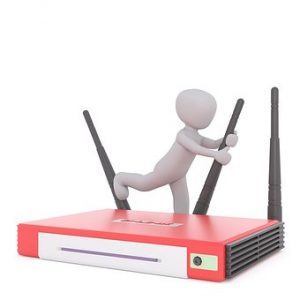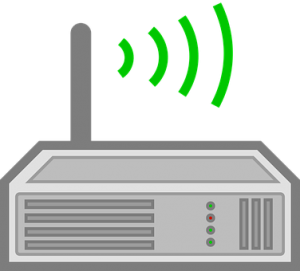D Link Extender Setup
In today’s interconnected world, a robust and reliable wifi connection is no longer a luxury but a necessity. Whether you’re streaming your favorite shows, working remotely, or staying connected with friends and family, having a strong wifi signal throughout your home is essential. That’s where wifi extenders come into play, and one of the most trusted names in networking solutions is D Link.
 Welcome to our comprehensive guide on D Link extender setup. If you’ve ever struggled with wifi dead zones, weak signal areas, or inconsistent connectivity, you’re not alone. In this blog, we’ll walk you through the step-by-step process to configure D Link extender for maximize coverage, eliminate dead spots, and ensure seamless connectivity across your space.
Welcome to our comprehensive guide on D Link extender setup. If you’ve ever struggled with wifi dead zones, weak signal areas, or inconsistent connectivity, you’re not alone. In this blog, we’ll walk you through the step-by-step process to configure D Link extender for maximize coverage, eliminate dead spots, and ensure seamless connectivity across your space.
D Link WIFI Extender Setup Process:
D Link extender set up can help improve the coverage & signal strength of your wireless network, especially in areas with weak or no connectivity. Here’s a general guide on how to configure D Link extender:
- Unbox and Connect: For D Link extender setup, unbox the wifi extender and ensure that all the necessary components are included in the package. Plug wifi extender into an electrical outlet within the range of existing wifi router. It’s advisable to place it midway between the router and the area where you need better coverage for D Link extender setup.
- Connect to the Extender: On your computer or mobile device, go to the list of available wifi networks. Look for the network name (SSID) of the D Link extender. This is usually named something like “D Link_EXT” followed by a series of characters. For D Link wifi extender setup connect to the extender’s network. The default wifi password (also called the pre-shared key or passphrase) is often printed on a sticker on the extender itself or in the user manual. Enter this password to connect for D Link wifi extender setup.
- Access the Extender’s Web Interface: For D Link extender set up, open a web browser on your connected device (e.g., Chrome, Firefox, Safari) and enter the default IP address of the D Link extender. This IP address is commonly “http://192.168.0.50” or “http://dlinkap.local” (without quotes). Press Enter. You will be directed to enter username & password. These credentials are often “admin” for both the username and password by default. If they don’t work, refer to your user manual for the correct login details.
- Configure the Extender: Once logged into the extender’s web interface, you should see the D Link extender setup wizard or configuration page. Follow the on-screen instructions to configure D Link extender. You’ll likely be prompted to choose the network you want to extend. Choose your existing wifi network from the list & enter wifi password for that network. You might have the option to set up a new extended network name (SSID) and password. This can be useful for differentiating between your main router’s network and the extended network. Complete any other configuration settings as prompted. These might include selecting a security mode (WPA2 is recommended for security), channel settings, and other advanced options. Once you configure D Link extender, save the settings and wait for the extender to reboot.
- Test the Connection: After the extender reboots, your connected devices should now be able to see the extended network (the one you configured in Step 4). Test the connection by moving to the areas where you had weak wifi coverage before. Your devices should now have a stronger and more stable connection in those areas.
You’ve successfully completed the process of D Link wifi extender setup. Remember that the steps might vary slightly depending on your extender’s model, so always refer to the user manual for precise instructions tailored to your device.
Common D Link Extender Set up Problems:
 D Link wifi extender setup extender can sometimes encounter a variety of challenges and problems that users might face during the process. Different variables, such as technical difficulties, device compatibility, network configuration, and user mistake, might cause these problems. Some common problems that users might experience during D Link extender setup include:
D Link wifi extender setup extender can sometimes encounter a variety of challenges and problems that users might face during the process. Different variables, such as technical difficulties, device compatibility, network configuration, and user mistake, might cause these problems. Some common problems that users might experience during D Link extender setup include:
- Connection Issues: Users might face difficulties in connecting to the extender’s network during D Link extender setup process. This can be due to incorrect password entry, interference, or compatibility issues.
- Configuration Errors: Incorrect configuration settings can lead to problems during D Link extender set up. Users might input the wrong SSID or wifi password, leading to connection failures.
- Browser Compatibility: The web interface of the extender might not display correctly or function properly on certain web browsers, leading to D Link wifi extender setup and navigational issues.
- IP Address Conflicts: Users might encounter problems related to IP address conflicts when accessing the extender’s web interface, which can result in connection issues.
- Firmware Issues: Outdated firmware on the extender can cause D Link wifi extender setup problems, including instability, disconnections, and compatibility issues.
- Interference: Environmental factors such as electronic interference or distance between the router, extender, and connected devices can affect D Link extender set up process and the overall performance of the extended network.
- Incorrect Placement: Placing the extender too far from the main router or in an area with weak wifi signal can lead to suboptimal performance and coverage.
- User Error: Mistakes made during the setup process, such as entering incorrect details or skipping important steps, can cause issues with the extender’s functionality.
- Network Security Settings: Incompatible security settings or authentication protocols between the extender and the main router can prevent successful communication and setup.
- Device Compatibility: Some older devices might experience difficulties connecting to the extended network due to compatibility issues with the extender’s technology.
While these are some of the common problems users might encounter during the D Link extender set up process, it’s important to note that solutions exist for most of these issues. Troubleshooting steps, firmware updates, proper placement, and following the setup instructions carefully can often help resolve these problems and ensure a successful extender setup.
How To Fix D Link WIFI Extender Setup Issues:
Fixing D Link wifi extender setup issues requires a systematic approach to troubleshooting. Here’s a guide to help you address common problems that might arise during D Link extender setup process:
- Connection Issues: To configure D Link extender, ensure you are entering the correct wifi password when connecting to the extender’s network. Double-check that you are connecting to the correct SSID (network name) of the extender. Make sure you’re within a reasonable range of the extender to establish a stable connection.
- Configuration Errors: For D Link extender set up, verify that you’ve selected the correct wifi network to extend during the setup process. Double-check the wifi password of your main router; any mistakes can result in connection failures.

- Browser Compatibility: To configure D Link extender, try accessing the extender’s web interface using a different web browser to see if the issue persists.
- IP Address Conflicts: For D Link extender setup, reboot your computer or device to release any conflicting IP addresses. Restart the extender to ensure a fresh connection.
- Firmware Issues: Check if there are any firmware updates available for your D Link extender model and apply them if needed. Follow the manufacturer’s instructions to update the firmware using the correct method.
- Interference: Place the extender in an area with minimal electronic interference, away from other electronic devices. Experiment with different extender placement options to find the best coverage.
- Incorrect Placement: Reevaluate the placement of your extender. It should be positioned within a reasonable distance from the main router and the area requiring coverage.
- User Error: Double-check the D Link extender setup instructions and ensure you’re following each step correctly. Don’t skip any required settings or configurations during the setup process.
- Network Security Settings: Ensure that the security settings on the extender match those of your main router. Check if there are any specific security settings that need to be adjusted for the extended network.
- Device Compatibility: Test the extended network connection with multiple devices to ensure compatibility. If an older device is having trouble connecting, check if it supports the extender’s network technology.
Remember that troubleshooting can involve trial and error, so be patient and methodical in your approach.
Conclusion:
A D Link wifi extender can alter the game for anyone looking to improve the dependability and coverage of their home network. By following the steps outlined in this guide, you’ve learned how to navigate through the setup process and overcome potential challenges that might arise along the way.
We’ve covered everything from connecting to the extender’s network and accessing its web interface to configuring settings, troubleshooting common issues, and ensuring optimal placement. With the right knowledge and approach, you’re now equipped to transform your wifi experience, bidding farewell to dead zones and weak signals. You can also navigate to the D Link Support Page to know more about D Link router or extender to resolve its related issues.
